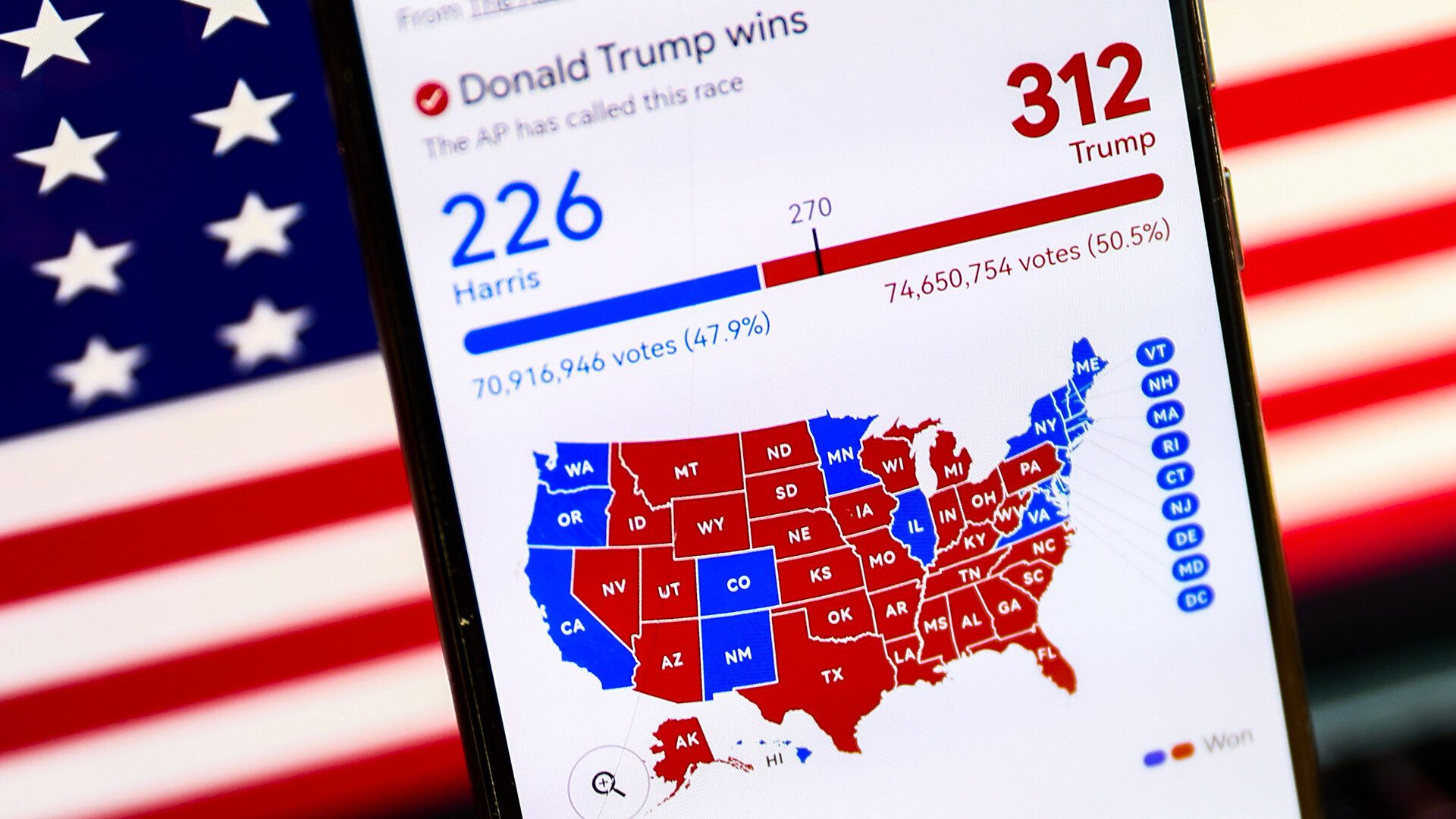- November 12, 2024
- By John Tucker
President-elect Donald Trump swept through the battleground states last Tuesday in an electoral tsunami. To the Republican Party and his other supporters, his defeat of Vice President Kamala Harris was no surprise. To blindsided Democrats, the results are cause for a reckoning.
On Monday, five University of Maryland political scientists gathered on campus to sort through some of the theories already being floated: unease with the economy, misinformation, a rejection of elitism, an oversimplification of voting blocs: women, rural people, people of color.
Several presenters at the event hosted by the Department of Government and Politics and Center for Democracy and Civic Engagement in Chincoteague Hall pointed to Trump’s gains from the 2020 election among all racial minority groups. “This is the most diverse Republican coalition to have won. It plays into the belief of realignment,” Assistant Professor Alejandro “Alex” Flores said.
Others wondered if racial groups might simply have been motivated by the economy as much as other communities. “Voters who disapprove of the economy tend to vote the incumbent out,” said Professor and department Chair Antoine Banks, citing one theory.
Following are takeaways from each scholar’s presentation.
Banks: Racialized rhetoric possibly influenced Black women’s votes
After Trump and running mate JD Vance amplified the false claim that Haitian immigrants in Springfield, Ohio, were abducting and eating other people’s pets, Banks was curious whether that would drive Black voters to the polls to support Harris—or increase their apathy.
Using a third-party survey company over the weekend, Banks found it didn’t significantly impact turnout but correlated with an increased likelihood of women voting for Harris—by 23 percentage points.
While Trump increased his overall share of Black voters in 2024, he lost his share Black female voters, "and this (survey) might help us understand why," Banks said. "This racialized messaging really resonated with them."
Michael Hanmer, professor and director of the Center for Democracy and Civic Engagement: Don’t trust polls
Hanmer, an expert on surveys, revealed “one of the dirty little secrets about the profession” when he told the crowd, “We do a really bad job in political science about predicting who’s going to vote and what that turnout rate is going to be.”
First, polls capture snapshots, he explained; they don’t track movement. Second, campaigns amplify faulty polls, so misguided predictions become self-fulfilling prophecies. Third, people don’t like to be polled. “It’s not the American way,” Hanmer said. “People don’t want to be on lists—especially a list the government has.”
When Trump won in 2016, defying polls, Hanmer took note. This time around, he dismissed media claims suggesting an inverse possibility: that a silent contingent of Republicans was secretly hiding its support of Harris. “I don’t think that ended up being the case,” he said.
Janelle Wong, professor: People of color in America are polarized
A dozen years ago, America was growing more polarized, but pundits attributed the splintering to white voters. Conventional wisdom suggested that most Black and Latino communities were at peace within the Democratic Party.
Now, said Wong, “We’re now seeing that polarization among people of color.”
But breaking the vote down by Black people who voted for Trump, Latinos and Asian Americans reveals competing factors, she noted. Subgroups were split among conservative ideologies and evangelical teachings, and Latinos were more likely to espouse anti-Black attitudes, she said.
Meanwhile, Blacks, Latinos and Asians who voted for Trump were nearly equally split among those with four-year college degrees and those without. It also didn’t seem to matter if they earned more or less than $50,000 a year, Wong said.
“This discussion about less-educated voters going to Trump is mostly a white thing,” Wong said. “We’re not seeing that to the same degree among people of color.”
Moreover, the gender gap among overall voters is actually a race gap, Wong explained. Since 1996, women collectively have favored Democrats, “but white women haven’t voted for the Democratic candidate (during) some of your lifetimes,” she told the audience.
Alex Flores: Latinos’ rightward shift was building for decades
An expert on the history of the Latino vote, Flores also rebutted assumptions that Hispanic and Democratic identity are necessarily synonymous. He pointed to several Latino-majority counties that have shown a burst of support for Republican governors since 1990.
Looking at this year’s election, “the data don’t support the claim that this was a Harris issue or an economic issue, or a failure of outreach,” he said. “There is a growing share of Latinos who see a clear preference for Republican candidates.”
This year, despite Trump’s incendiary immigration rhetoric, that trend continued. Flores partly attributed it to flawed “information ecosystems” in Latino communities, where many voters cannot access ballot information in Spanish from their local election administrators, despite laws that demand it.
Moreover, during this year’s campaign, “Trump was very careful to say, ‘We mean bad immigrants—the criminals—not you,’” Flores said.
The strategy was effective. “He knows he can’t win without this coalition,” Flores said.
David Karol, associate professor: Trump will wield more power during his second term
Normally, a president’s second term becomes a lame duck session, but Trump could buck that trend, said Karol, an expert on political institutions.
In 2017, Trump surrounded himself with establishment GOP figures like energy executive Rex Tilllerson and Marine Gen. John Kelly as his inaugural secretary of state and chief of staff, respectively. The “adults in the room” largely impeded Trump, Karol said. “We can expect less of that this time.”
In 2025, Trump will instead fill high-level posts with ideologues who had junior roles in his first administration, Karol predicted. Politicians who defied Trump have been forced out, while cheerleaders like Vance are being rewarded.
In other words, Trump is no longer the political anomaly he was considered in 2016; now he’s the face of the party, Karol said.
